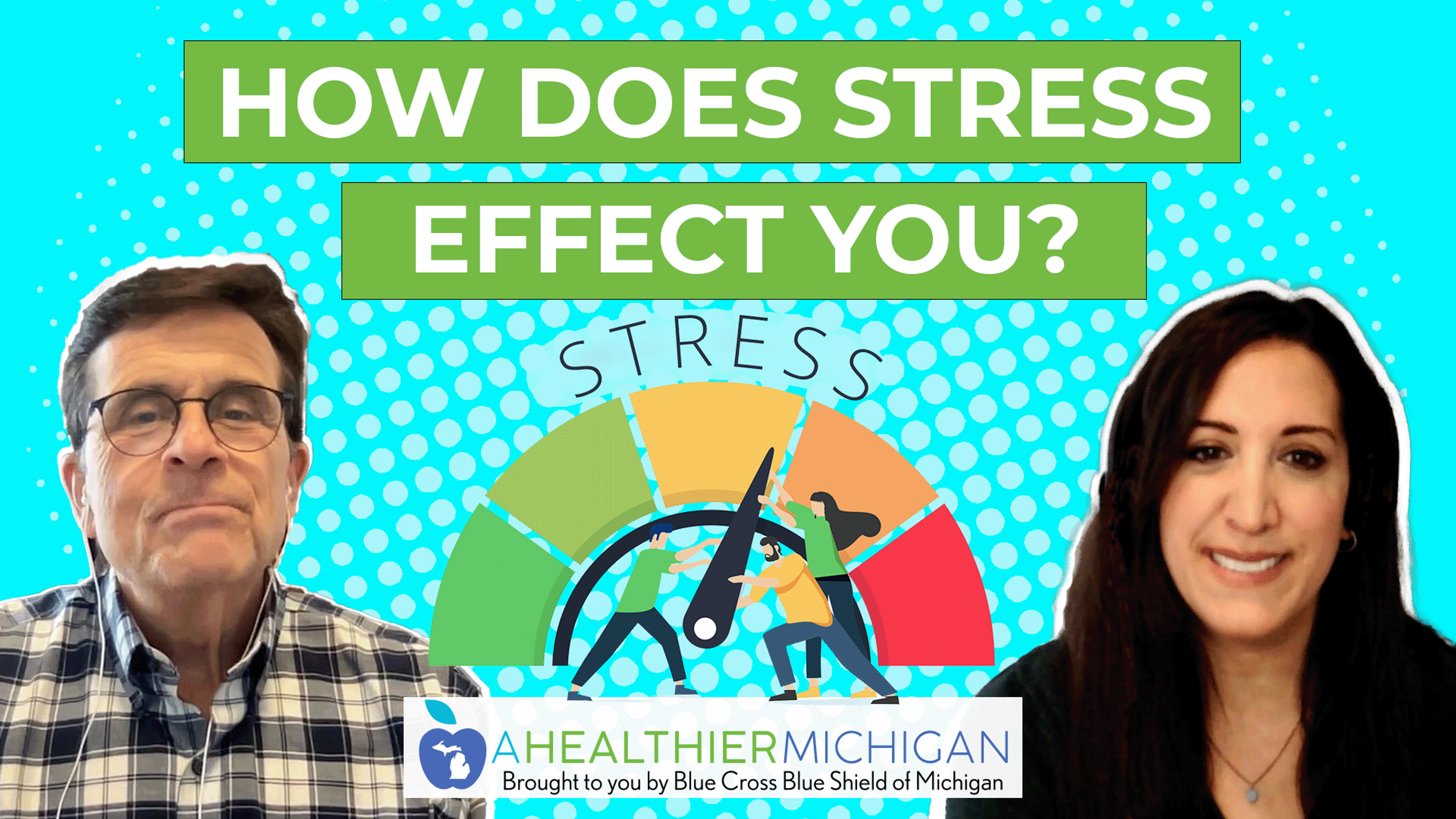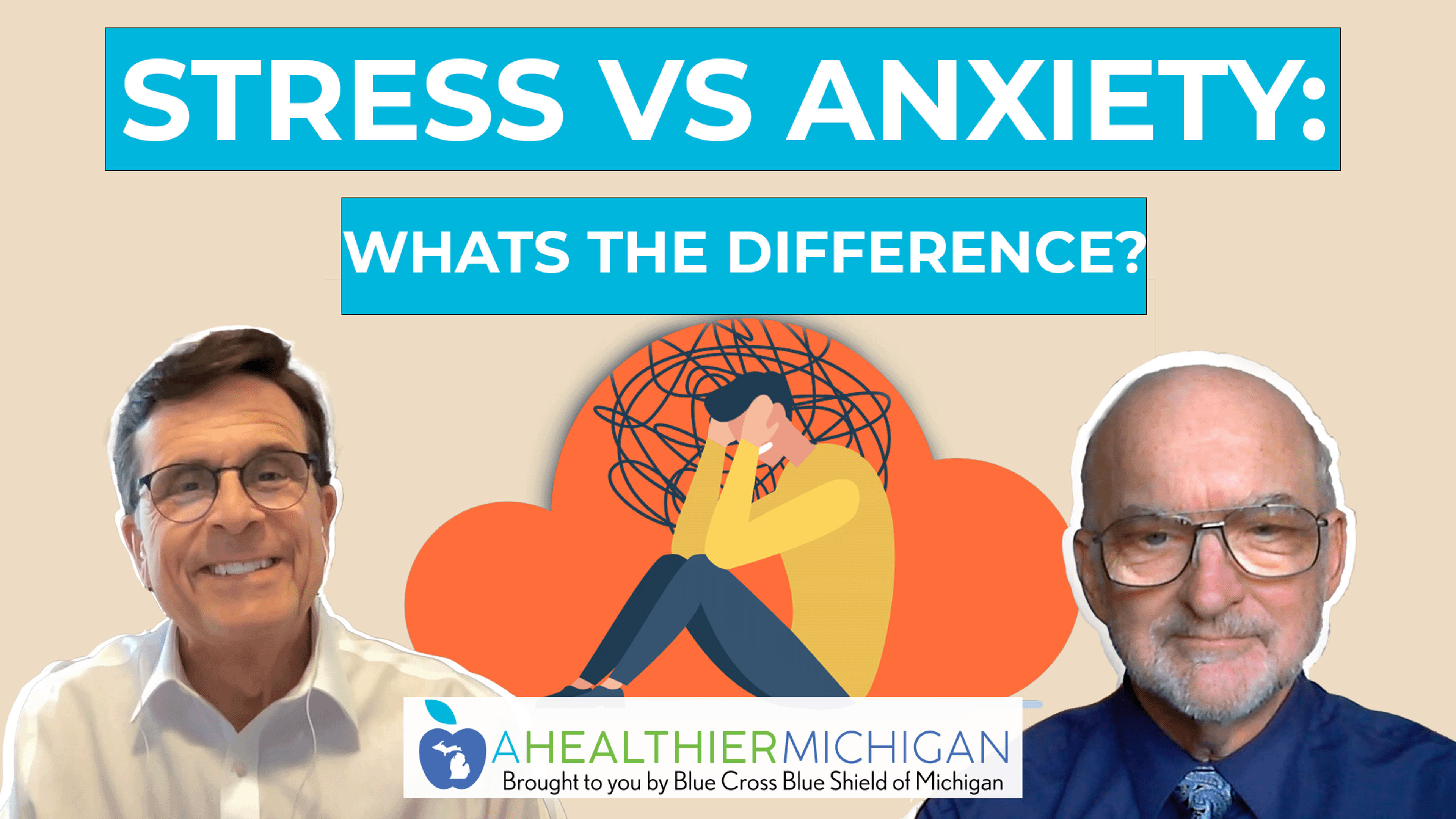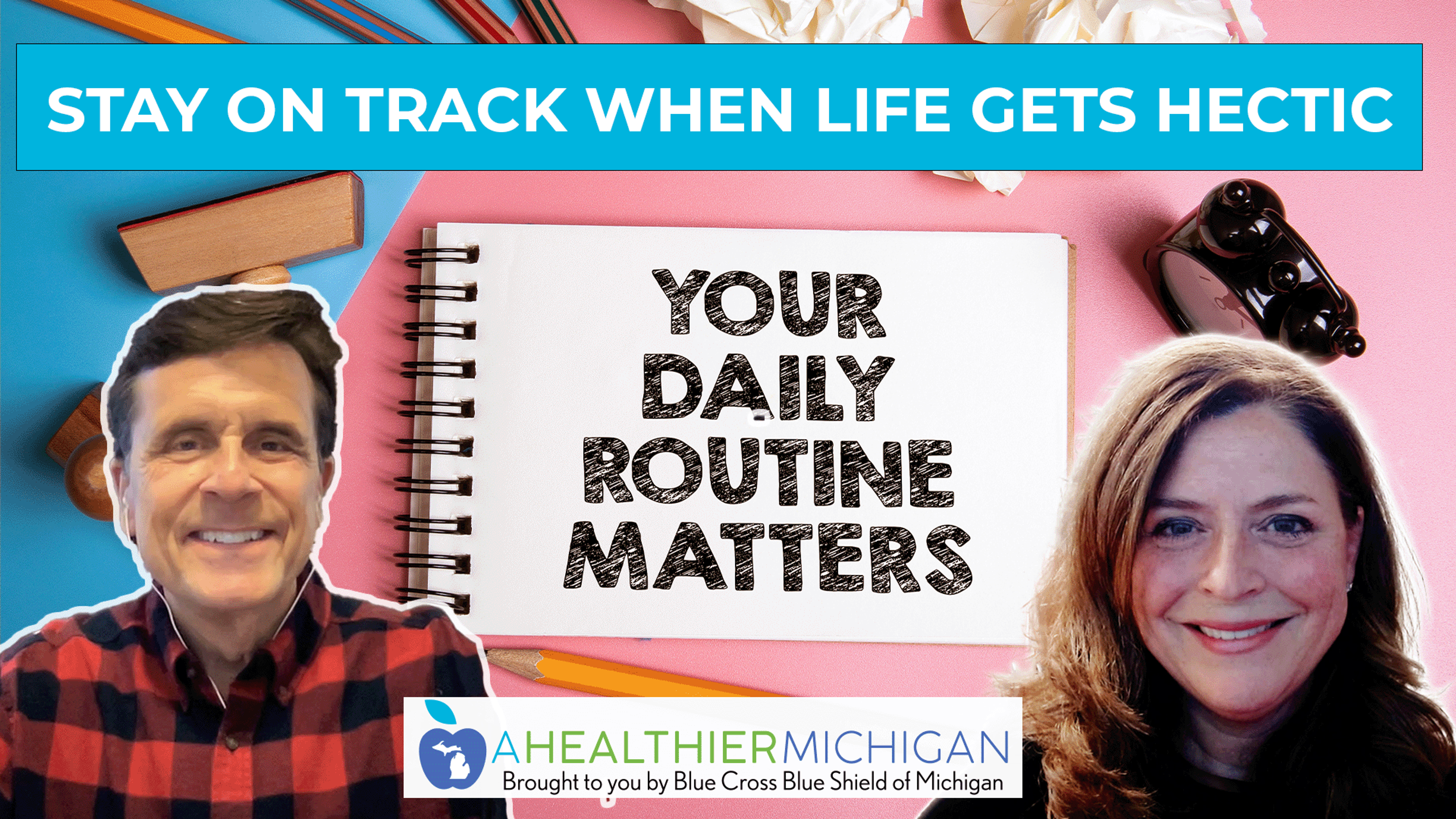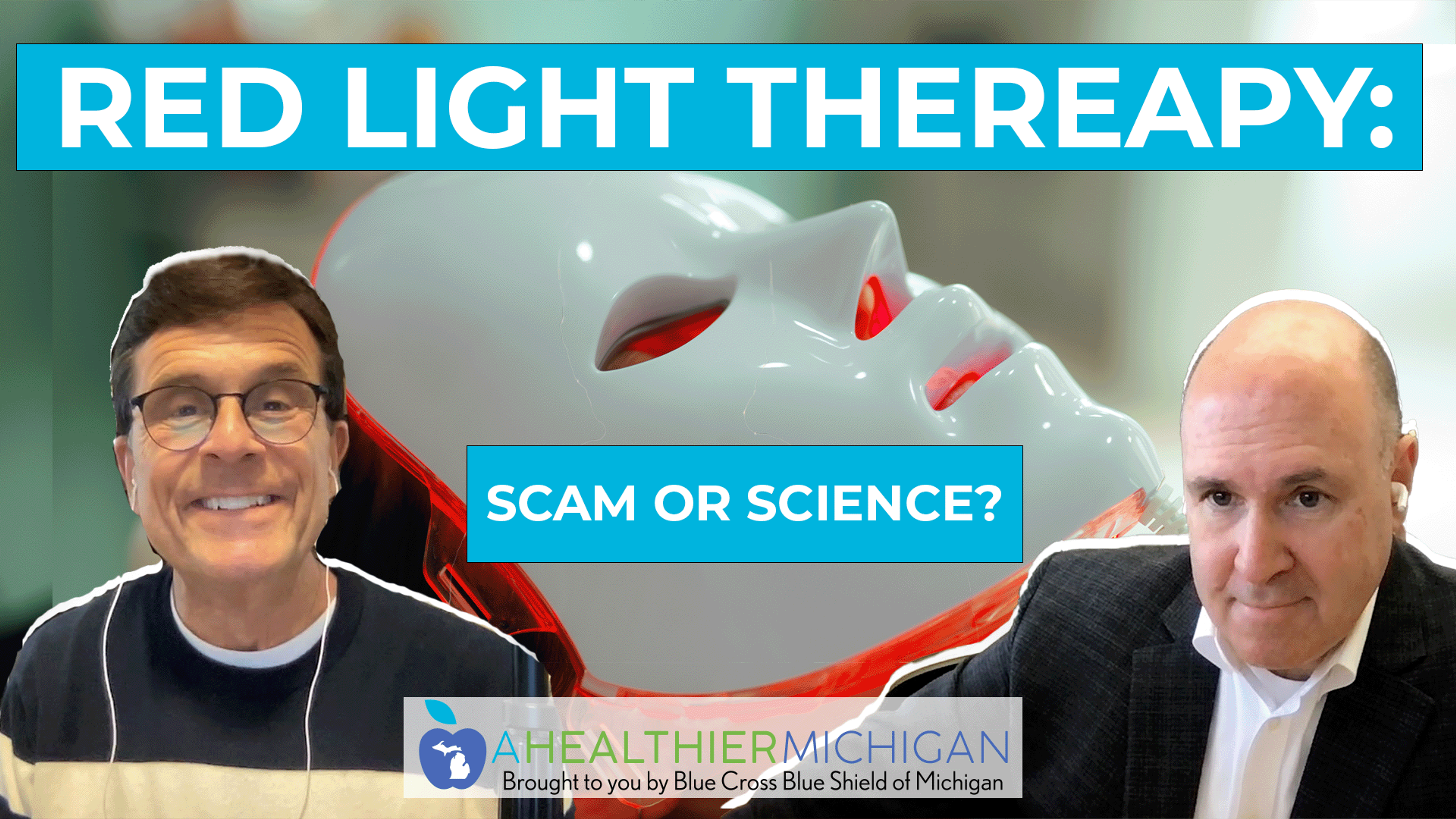How to Pair Foods to Boost Nutrient Absorption
| 1 min read
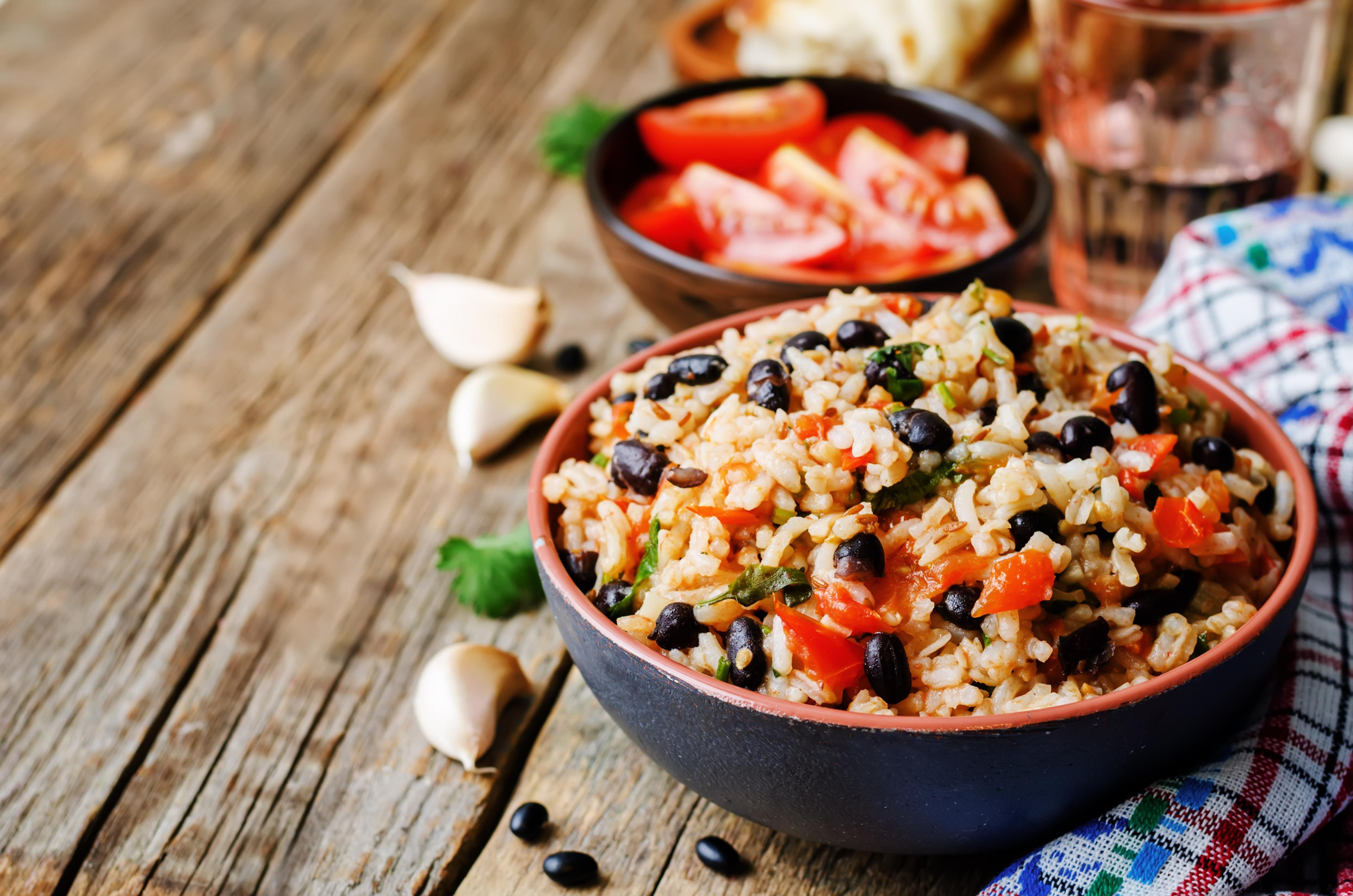
00:00
00:00
About the Show
On this episode, Chuck Gaidica is joined by Shanthi Appelö, registered dietitian for Blue Cross Blue Shield of Michigan. Together, they discuss how certain food pairings can help increase nutrient absorption.
In this episode of A Healthier Michigan Podcast, we explore:
- Why certain food pairings benefit our health
- Food combinations that are better for nutrient absorption
- Misconceptions about pairing foods
- How often you should be utilizing food pairings to help nutrient absorption
Transcript
Here is the full transcript of this episode. You can listen to the audio version on streaming platforms or watch on YouTube.
Chuck Gaidica:
You've probably heard of superfoods, one food that is a powerhouse of nutrients. But are there foods that we can pair together that could positively impact the nutrients being delivered to the body? This is A Healthier Michigan Podcast, episode 157. Coming up, we discuss ways we can pair foods to increased nutrient absorption.
You've probably heard of superfoods, one food that is a powerhouse of nutrients. But are there foods that we can pair together that could positively impact the nutrients being delivered to the body? This is A Healthier Michigan Podcast, episode 157. Coming up, we discuss ways we can pair foods to increased nutrient absorption.
Welcome to A Healthier Michigan Podcast. It's a podcast dedicated to navigating how we can improve our health and well-being through small, healthy habits that we can start implementing right now. I'm your host, Chuck Gaidica, and every other week, we'll sit down with a certified expert to discuss topics that cover nutrition, fitness, and a lot more. And on this episode, we're diving into how food pairing with the right kind of foods can impact our health. With us today and back on the show is Shanthi Appelö, who's a registered dietician and she's an experimenter and an adventurer in the kitchen. And so she knows so much for she's forgotten more about this kind of stuff than we know. Good to see you again.
Shanthi Appelö:
Good to see you, Chuck.
Chuck Gaidica:
Yeah, thanks. I was thinking about this and throughout history we've seen, to be fair, some of them are cartoon characters, but they always seem to have gravitated toward one like superfood. Popeye had a spinach. Bugs Bunny had carrots. Winnie the Pooh had honey. All of those actually sound really good for you, and they are. But while we're focusing on superfoods to help boost certain aspects of our health, in moderation of course, is it possible that we could pair certain foods? I've heard this a lot with different kinds of vitamins and things, but can we pair different foods together to actually help with the absorption of nutrients?
Shanthi Appelö:
Yeah, there are a few food combinations where certain nutrients and certain foods help boost each other or help the absorption of each other. And a few of them are also mysteries to us. We see that certain foods have nutrients that work together, but we don't know exactly what those are. But that's really where food first is the theory here. We want to focus more on consuming an overall plethora of nutrients from food versus supplements.
Chuck Gaidica:
And when that happens, you say some are a mystery, what do you mean? We're not quite sure why certain combos actually boost certain things in our body? Is that what you mean?
Shanthi Appelö:
Right. So there are certain ones that we can go over that we absolutely know are good food pairings, but there are certain ones that are a mystery. And the reason we see that is because we may see certain foods working together in synergy, in absorption in foods, but then when we look at them in the supplement form, they don't do the same thing.
Chuck Gaidica:
So what's happening in the body that allows these pairings of maybe they are superfoods individually, but when they come together, they enhance nutrient absorption, what's actually going on?
Shanthi Appelö:
Yeah. So it isn't so much what's happening in our body as much as it's the nutrients in the foods working together. And it could be a little bit of how things work in the body as well. So for example, when we're consuming foods, it's getting broken down and in our intestines a lot of that nutrients are getting absorbed and they do so through different transporters going into the cell. So for example, calcium is going to be moving into the cell through a certain transporter. Well, that same transporter could be used for a different nutrient like iron. So they could compete in that way. So there are different ways that our body functions that these nutrients make it into the cell. And in the same way, there are some that help the absorption. And I can give you a few examples.
Chuck Gaidica:
Yeah, that would be good. What are those kinds of combos?
Shanthi Appelö:
Yeah, so I think one that's pretty common that a lot of people have seen is iron and vitamin C. But I want to dig into this one a little bit more because it's really just non-heme iron. And when I say that, it's because there are two different types of iron. There's heme iron, which comes from animal sources. You think your chicken, beef, liver, things like that. And then there's non-heme iron. These are going to come from vegetables. You see them in things like beans, dark leafy greens, fortified breakfast cereals, things like that. So the vitamin C is going to help boost the absorption of that iron. So consuming those together is going to be a really good idea. So an example would be something like having a spinach salad with strawberries, black bean burger maybe with some bell peppers and tomatoes layered on there. Those are going to be great combos because it's going to help the absorption there of iron.
Chuck Gaidica:
That's really interesting. So that kind of comes back to things we've discussed before and you kind of said that in a way. To start this idea of a well-balanced diet has some sound reasoning even when it comes to helping certain things get absorbed the best way possible. It just makes perfect sense as simple as it sounds.
Shanthi Appelö:
Yeah, there are some that are so extreme in the way that they help other nutrients absorb, and one of those is going to be turmeric and black pepper. So turmeric has this active component called curcumin, and then we have this active component in black pepper that's called piperine. And when they're combined together, that piperine increases the bioavailability of that curcumin by 2000%. So if you're someone who's into getting that turmeric for its anti-inflammatory benefits, antioxidants, maybe you're someone who has somewhat of a juice to start out your day with some turmeric in it, add some black pepper. Or if you're a curry lover and you use turmeric in your curry powders or curry blends, then add lots of black pepper. It'll help absorb.
Chuck Gaidica:
Well, now that to me sounds like maybe it's just too easy for my brain, but I don't know that I can see pounding down a morning shake or juice based thing-
Shanthi Appelö:
Just a little crack.
Chuck Gaidica:
... with black pepper and turmeric. I can see it more in maybe an entree, or like you're saying, something that I can mix into a sauce or something. That makes perfect sense to me.
Shanthi Appelö:
Yeah. Maybe not your sweet morning juice.
Chuck Gaidica:
Right. Right. But to be fair, there are people who are just putting in all the things that they think they want to have and then that's it. They down it and got to go, so God love them. It's just that for me, I'm thinking, "I don't know if that flavor combo really appeals to me." I've tried the turmeric, black pepper in like a coffee drink, and oh, I-
Shanthi Appelö:
That doesn't sound good to me either. But something you may be into would maybe be a little bit of green tea with citrus juice. So adding a little bit of lemon juice can increase the bioavailability of those antioxidants in your green tea.
Chuck Gaidica:
Yeah,
Shanthi Appelö:
That one we can get on board with.
Chuck Gaidica:
So what else would there be? Are there other combinations that you can share with us that we should look forward to?
Shanthi Appelö:
Yeah, I think one that's really fun, it's not necessarily one where two foods are working together, but just having tomatoes that are cooked or canned actually increases the bioavailability of lycopene, which is that antioxidant that we see found in tomatoes because of their bright red color. So the canning process in and of itself increases that bioavailability and cooking it in general.
Chuck Gaidica:
Isn't that funny because, well now it's a misconception. I would say my preconceived notion would be that cooking a tomato would drain goodness out of it. And you're saying quite the opposite. And it makes perfect sense. That's why pizza must be good for me. It just makes sense now.
Shanthi Appelö:
Yeah, it's all good for pizza. But well, I think something important too to recognize and to what you're saying is that nutrients can certainly be destroyed during the cooking process, especially water-soluble vitamins. For example, tomatoes have vitamin C. So if you're cooking them for a long time at a high temperature, they can certainly lose some of their vitamin C. So it's a little hit or miss.
Chuck Gaidica:
Anything else? Any other combinations that seem to make sense for us to have?
Shanthi Appelö:
Yeah, I think we can steer this conversation maybe a little bit to our most common nutrient deficiencies that we see in our culture. I know we touched on iron a little bit and how consuming vitamin C with those non-heme or those vegetable sources of iron can be a good idea. But there's a few other ones that we can take into consideration. Vitamin D is a pretty common nutrient deficiency. And so something unique about fat soluble vitamins like vitamins A, D, E and K is that we need fat in order to absorb them. And so vitamin D supplements are quite common. Some physicians are going to prescribe them to patients who are deficient in vitamin D. And so research does show that consuming some kind of fat with our vitamin D can help the absorption. But that doesn't mean that if you take your vitamin D supplement and you don't have any fat with it, that you're not going to absorb anything. You certainly will still absorb something, but that will be enhanced when you consume them together.
Chuck Gaidica:
Well, and in Michigan coming out of the clouds of the winter, I think that vitamin D deficiency in the great Lakes is a huge deal, right? Not just in Michigan, but all the states around. They get the clouds that don't seem to leave because you're not getting the vitamin D from the sunshine. So that supplementation makes perfect sense. But again, back to balance, I guess Shanthi, if right after you're taking your vitamins or vice versa, you start your breakfast, if you started with a little yogurt, you had a little fat in there. Even if it's triple zero, you may get a little fat one way or another. It just makes sense. You're kind of rounding out that balance. And then when you do take your vitamins, it seems like you're actually helping yourself by just kind of keeping it life-sane.
Shanthi Appelö:
Yeah, I think it speaks to the importance to that fatness isn't necessarily bad. I think this was especially a thing in the '80s and '90s that people were very afraid of fat. There were a lot of different products that were coming out on the market that were promoted for being fat-free. And so we recognize that there is an importance in these fats, especially when we're concerned about absorbing these nutrients.
But we of course want to focus on the healthy fats, right? So when we're thinking about vitamin A and these orange and yellow veggies and tomatoes, we want to maybe consume those with some healthy fats. So for example, if you're a huge fan of tomatoes as they're about to come in season here in the summer, you can serve those with some olive oil. That would be a really healthy fat to help you absorb that. Vitamin Es and a lot of nuts and seeds. So those naturally are going to have healthy fats built into them. And then same with fatty fish, such a great source of vitamin D, also got that healthy fat packed into them with those omega-3s. So anyway we've kind of got those built in.
Chuck Gaidica:
Well, and it's interesting you mentioned fish because as you're speaking, I'm thinking, "Well, maybe I should change up a little bit" because I do take a vitamin D supplement, but I just thought, Well, maybe I should take it later in the day when I'm more apt to have..." I don't really have much fat in my morning breakfast except for maybe yogurt, but I'm thinking maybe that's I'm having salmon that night. These are little changes that would not be deal breakers. They're not like crazy things to change up. I always think I need to take my vitamins first thing in the morning. It's just the way I'm trained, like Pavlov's dog. So maybe there's a little change up and it's just better for me.
Shanthi Appelö:
Yeah. Yeah, another one of these common deficiencies or foods that we maybe don't consume enough of are those calcium-rich foods and vitamin D comes into play here too. And so calcium foods, those dark leafy greens, broccoli colored greens, they're also in oranges. Of course we know that our dairy foods have it.The absorption of it's going to be more enhanced when you consume it with vitamin D. So we've got a great recipe on ahealthiermichigan.org for this maple glazed salmon with crispy broccoli, a little brown rice. It's a great recipe, a little plug there. But we've got those things working together. We've got the calcium from the broccoli, the fat, and the vitamin D from the salmon. So it's a great combo.
Chuck Gaidica:
And again, when it comes to... That sounds like something that would be right up my alley, that whole recipe. But it does sound like a very slight change for some of us. Instead of using iceberg lettuce, switching to more of a spinach based salad. It's not a stretch. Obviously you can blend them. But these little hacks would be really easy ways to introduce or enhance your health. So that's good to know.
Shanthi Appelö:
Yeah. And then that same conversation about calcium too, there's some research that shows that consuming iron and calcium together isn't the best idea. They can compete for those same transporters.
Chuck Gaidica:
Oh.
Shanthi Appelö:
There's kind of this statistically significant effect in the short term of iron absorption when you consume calcium together. But in that grand scheme of things, it's not really a huge deal. It doesn't really affect your iron stores that much, but it's something to pay attention to. But something that you should pay attention to, especially if you're someone who takes a lot of antacids, is that you want to space out your iron supplement with antacid at least by two hours because those can compete with the acidic environment in the stomach.
Chuck Gaidica:
Oh, interesting. And can iron give you trouble? Or you're not saying that. You're just saying that when the channels, the absorption would be affected?
Shanthi Appelö:
Yeah. So because of the pH change. The antacids are going to increase the pH in your stomach, and so that may lead to the iron not being absorbed as well.
Chuck Gaidica:
Oh, gotcha. So are there misconceptions? Do you find that people actually have some idea that's wrong about food pairings and their health benefits?
Shanthi Appelö:
Yeah, I would say the biggest one is probably the more supplements, the better. That's not always the case. I think we all want a quick solution to our problems. And if that means taking a vitamin to satisfy all of our needs, that sounds great, right? But an example I want to give here is beta-carotene in the supplement form. So we talked a little bit about how certain foods work in synergy with each other, but we don't know exactly what it is. So with beta care team, when we consume it in foods, it's then converted to vitamin A and it can help support healthy vision and things like that. And it can actually be preventive of certain types of cancers because it's also an antioxidant. But when we over consume it in the supplement form, it can actually increase our risk for certain cancers in previous smokers. So more is not necessarily always better and supplements aren't always better, but I think that's something so important to highlight.
Chuck Gaidica:
I recall talking about this idea that I want to bring up for just a minute. In previous episodes somewhere. I don't know if it was with you, but this idea that we see this disclaimer often that we should talk to our doctor about supplements. And for me, I've heard it, I've read it, and I think, "Well, that's the goofiest thing. Why would I need to talk to my doctor about my vitamins?" And you bring up this really interesting thing about vitamin A and what if you are a smoker, were a smoker recently? Cancers? Would never think in a million years that a vitamin could actually enhance a problem. But there's the perfect reason to go to your doc and say, "I'm thinking of changing up my routine, or I want to add this. What do you think?" I mean, what a great bit of advice, but I've never really thought much about it.
Shanthi Appelö:
Yeah. And I think it also speaks to the importance of talking to someone who is going to have more information about what supplements are going to work for you and also the importance of looking at what brands of supplements you're selecting because they're not regulated by the FDA. And sometimes what is listed on the label is not actually what's in the product. So I recommend looking at things that have a second source of regulation, whether they're USP verified or something like that. You can take a look at their website, USP, and see if they have that second layer of verification to make sure what's in it is actually what you're going to get in the pill.
Chuck Gaidica:
Yeah. Were there any combinations of foods that we blew past? Anything that was on your list that we didn't touch on?
Shanthi Appelö:
I think something important is we touched on a lot of deficiencies and things like that, but the final thing is that if you're someone who is vegan or vegetarian and you're concerned about getting all your amino acids from food, there are a few combinations you can think of. So what we call them are complete proteins, and that means that they have all the essential amino acids. Non-essential amino acids are ones that we produce in our body in and of itself, that we naturally are able to make them. But essential amino acids are ones we have to consume for food. So there are lots of proteins in the animal world like eggs, beef, chicken, all of those that provide us with complete proteins or all the amino acids that we need. But in the vegetarian world, we have to pay a little bit more attention.
So to get those, you can combine rice and black beans. I think that's a pretty common one that people know of. If that's not your jam, I'm not a big bean person, so hummus and whole wheat crackers. I mean hummus, yeah, it does have chickpeas, but to me it's different. It tastes a little different. Quinoa and corn is a good combination too. So if you're into bowls, like a little bowl with some nice dressing and veggies. Making sure there's some quinoa and corn there. And then finally, for our peanut butter and jelly fans, whole wheat bread and peanut butter is a good combo too, or really any kind of nut butter.
Chuck Gaidica:
Yeah. And this idea of what you just mentioned, a lot of this stuff, people are getting on the go a lot now, whether you're getting a wrap from your favorite place with black beans, rice, and chicken, there's a combo. Whether you're getting a bowl. I mean, there are ways to do this to fit into your busy lifestyle if that's what you're doing, that you can get this stuff on the go. It's not like you can't find these combos.
Shanthi Appelö:
Yeah, exactly. No, I think it's easy. Little tweaks. Put some black pepper on your curry and sprinkle some lemon juice on your spinach and you're good to go.
Chuck Gaidica:
Yeah. So finally, how often should we utilize these food pairings? Is this like an everyday thing we should be thinking about, maybe just to touch more?
Shanthi Appelö:
I think if you're deficient in something, it's certainly something to pay attention to daily and of course working with your doctor. But for other people, I'd say it's more about just including as many foods as you can. You don't have to think too much of it, but there are certainly ones of course, that increase their bioavailability. And I would say the black pepper and turmeric is an excellent example because of that huge difference, that 2000%.
Chuck Gaidica:
Oh, I think the stewed tomato thing is a hit for me. Trying to think of canned. I just don't ever think of eating... I mean, we get pasta sauce and we make stuff from scratch. But yeah, this is a good one because I love tomatoes, so that's great. And you're right, season is not too far off, so that's wonderful. Any other last takeaway for us as we wrap up?
Shanthi Appelö:
Just as you're making changes in your diet, if you're considering supplements, I mentioned something about antacid and iron. Just make sure you're involving your doctor in all of these. There are of course food and food interactions, but there are also food and drug interactions that are so important that they're more able to have that discussion with you.
Chuck Gaidica:
Well, it's good stuff. And I'm not quite sure that all these cartoonists or Disney or all these people sat down and thought about the idea that spinach was going to make-
Shanthi Appelö:
Definitely not Popeye.
Chuck Gaidica:
Right. Right. Was going to make Popeye strong or Bugs Bunny with carrots was going to make him see better. But somehow there must have been some little bit of truth in this idea because even back in the '40s or '50s or whenever this started, Bugs was probably even sooner than that, there must be some reason a thread of why they decided to attach that and not say, "Hey, Bugs Bunny loves chewing gum or something," you know? So it's pretty funny to think about. Well, it's good to see you, Shanthi. Thanks so much.
Shanthi Appelö:
Thanks, Chuck.
Chuck Gaidica:
Yeah, you're welcome. And thank you for listening to A Healthier Michigan Podcast. It's brought to you by Blue Cross Blue Shield of Michigan. If you like the show, you want to know more, you can check us out at our newly refreshed website, ahealthiermichigan.org/podcast. You can find recipes there like Shanthi was talking about with that maple-flavored salmon, oh, and the crispy spinach. That sounds awesome. You can leave us reviews or ratings on Apple Podcasts or Spotify. We also have a YouTube channel. You can get to us and follow us on Facebook, Instagram, or Twitter. And you can get new episodes, all the old episodes on your smartphone or tablet. So be sure to subscribe to us on Apple Podcasts, Spotify or your favorite podcast app. I'm Chuck Gaidica. Be well.

